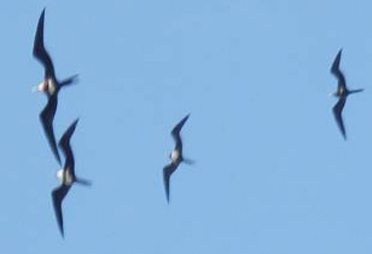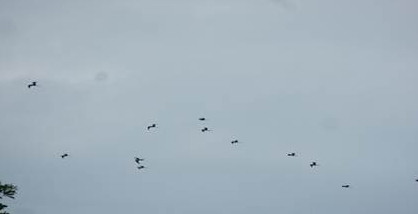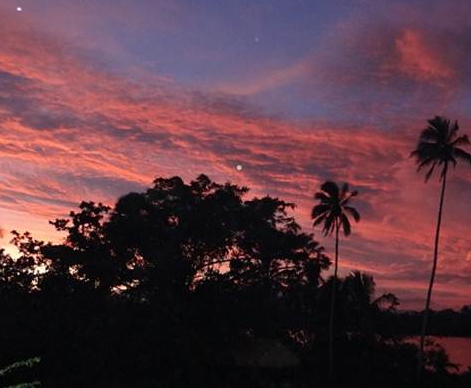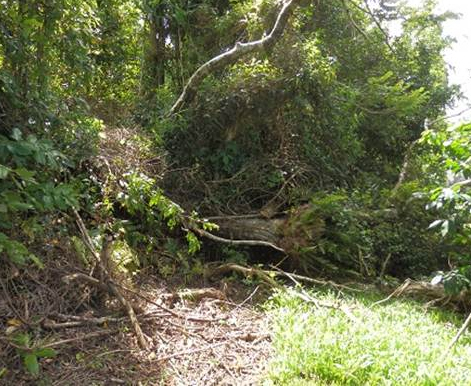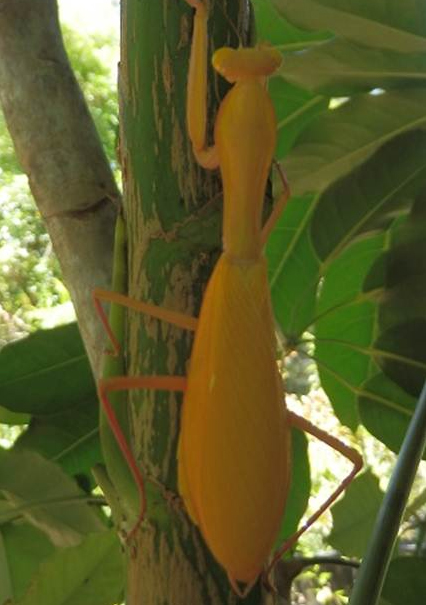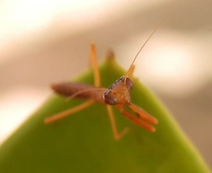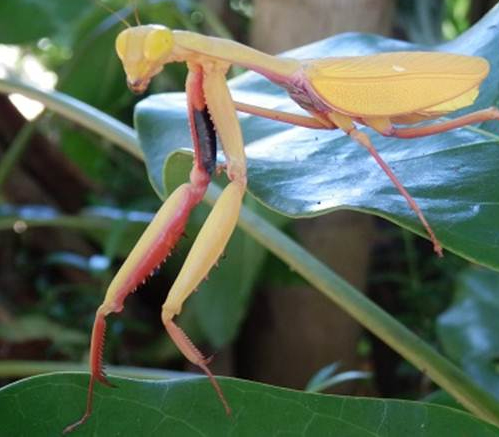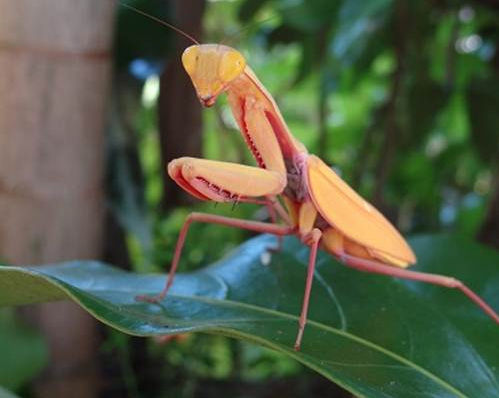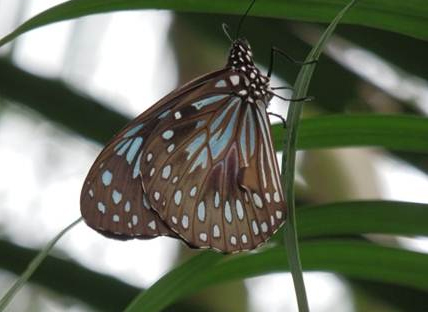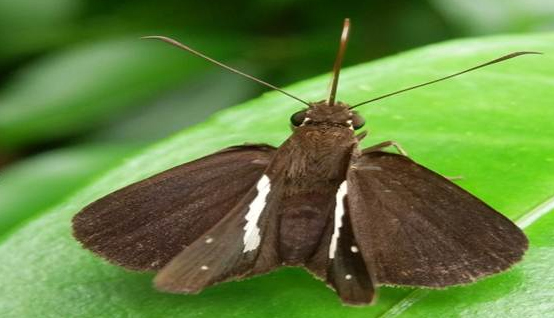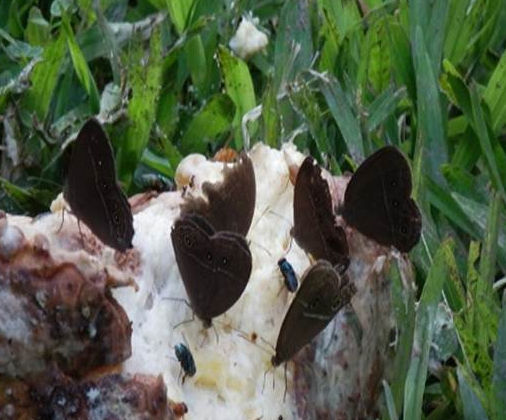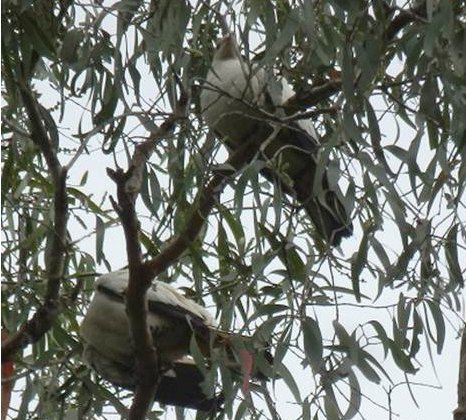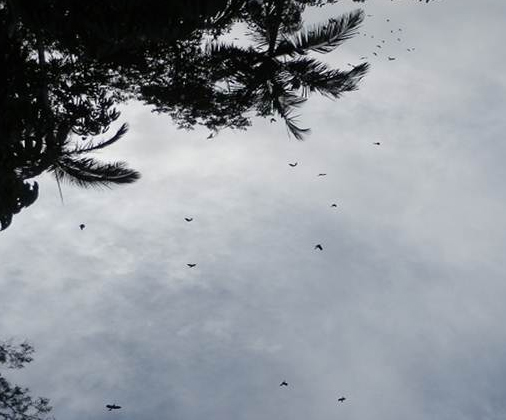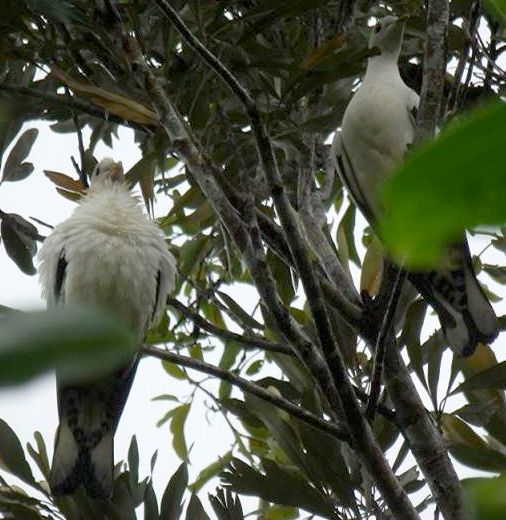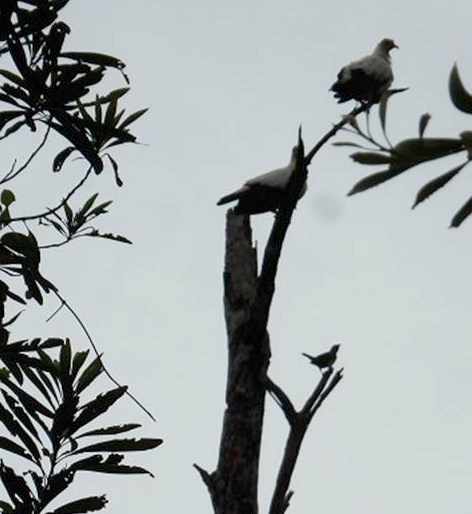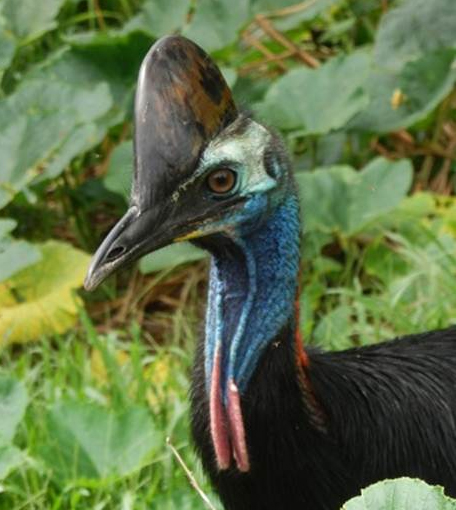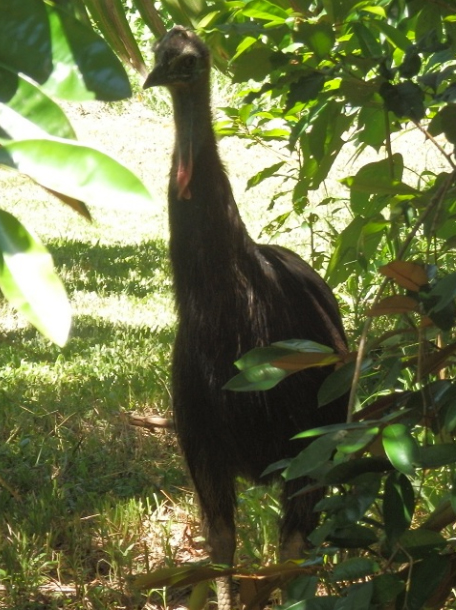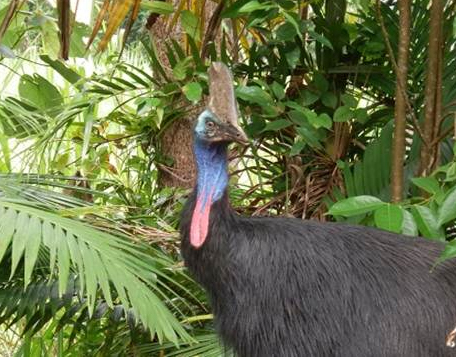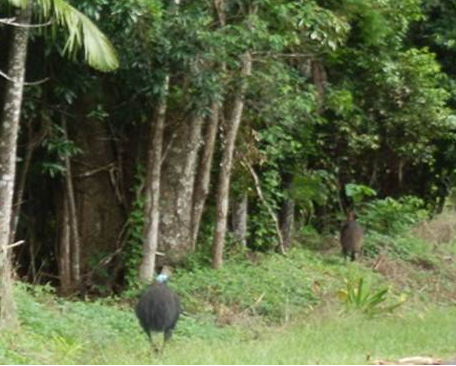Hello from camera happy Coquette Point, When sailors see Frigate birds at sea it is a sign that land is within 200 miles. However, when Frigate birds fly over the land it is time to be afraid, very afraid. Frigate birds over the land are a sign of gale force winds about to occur and the birds stay, continually in flight, for the duration of the storm. Last Sunday a flock of 60 Greater Frigatebirds arrived and started flying in anticlockwise concentric circles over the Cassowary Coast. |
On Monday night the wind was accompanied with heavy rain as the monsoon descended over the Cassowary Coast. I recorded 350mm of rain overnight, nothing exceptional for this region, after all this is the Wet Tropics. Throughout the sixties and seventies daily rainfall of over 300mm was normal and falls of that amount could last for weeks. It also has not been an infrequent occurrence during the wet seasons of the last forty years. So I was a surprised when in today’s paper it was reported that the ‘deluge’ caused $20million dollars damage to CCRC (Council) infrastructure. What is the infrastructure made from that is cannot withstand normal Wet Tropics weather?
I had a special visitor on Thursday, a yellow praying mantis. I had never seen a yellow mantis at Coquette Point before and today a yellow mantis nymph landed on my arm. I thought it was a green ant dropped out of one of the fallen trees and I was just about to flick it off my arm when I saw it turn its head to look at me. I placed it gently on a leaf and took some photos for you to see. What a wonderful world we live in full of such amazing creatures. Every tree is home to some special creature and fallen trees contain a wide range of insects and can create niches for other creatures. I have learnt not to be in too great a hurry to clean up a fallen tree. |
A new cassowary has turned up on Tuesday. It has copper markings on its casque and a white dot on its left wattle. I estimate it is about three years old. It still has a few brown feathers on its lower flank. I have called this cassowary Dot- reference to its white dot. I do not know its parentage. The bird is not timid and allowed me to get quite close to take a series of pictures to record its markings. Subadult cassowary ‘Don’ has been around all week and seems to be living in the forest around my sediment pond. |
This afternoon my friend Jacque Grima came over for a chat she told me she saw a cassowary outside the nursery near the road. We raced out with the camera and it was ‘Dad1’ feeding on the fruit of the Leichhardt tree Nauclea orientalis, the trees have been in fruit for over a month and the cassowaries are having a feast. |
Thank God the State Election is over! I missed out on a vote as there is no longer a Hinchinbrook booth at East Innisfail school, where I have voted for the last fifty years. (Coquette Point is part of the Hinchinbrook electorate). The presiding officers could not direct me to another booth close by. As there was a two hour queue wait for absentee votes I walked out, I had to open the nursery at 8.30am. No wonder the Bligh Government has lost by such a landslide their disarray and mismanagement has even extended to the electoral commission.
Cheers for now,
Yvonne C.
